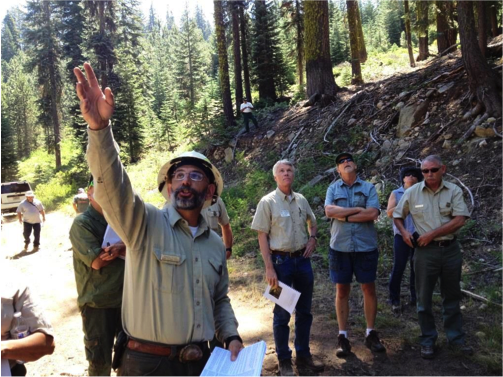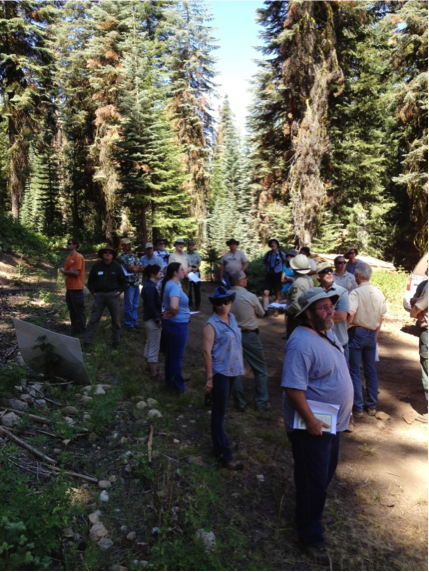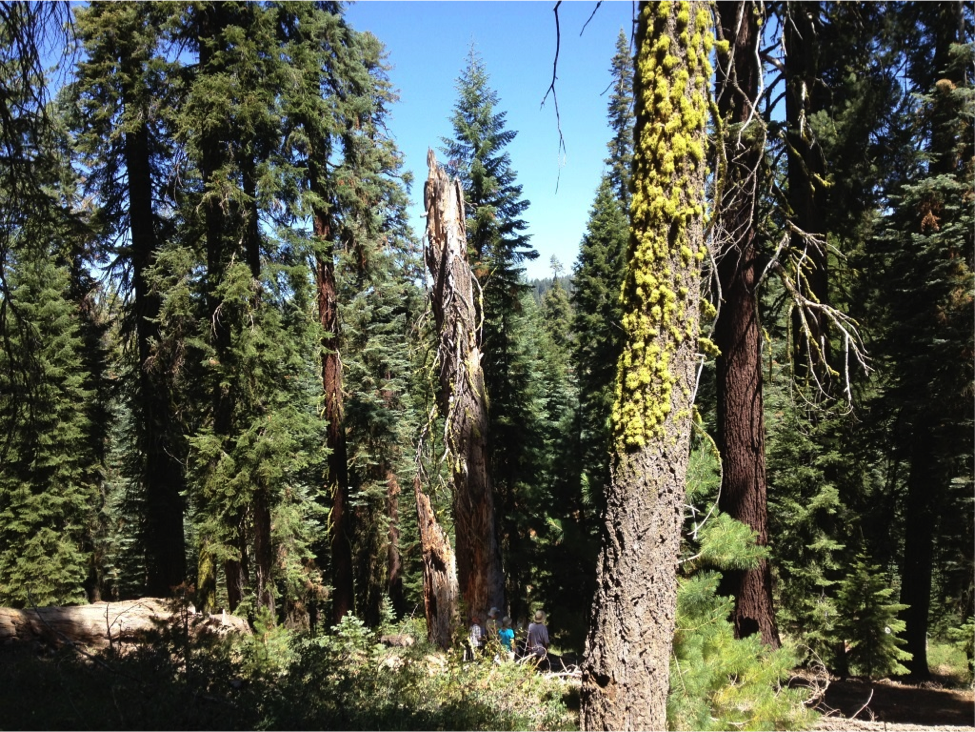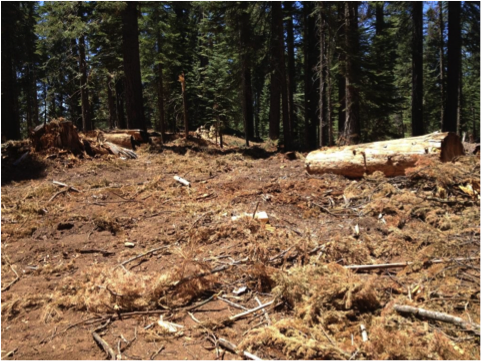Dinkey Landscape Collaborative Public Field Trip
/This blog post is written by Justine Reynolds, Program and Community Outreach Coordinator for the San Joaquin Valley Leadership Forum. All pictures are attributable to Pam Flick , California Representative at Defenders of Wildlife - thanks Justine and Pam!
Notes: Dinkey Landscape Collaborative Public Field Trip
July 19, 2013 9:00 AM to4:00 PM
Eastfork Management Unit
Handouts:
- Dinkey Collaborative Public Field Trip Workbook: Forest Treatments and Wildlife Habitat
- Map of Eastfork Management Unit with stops marked

Stop #1 – Pretreatment Landing, 11S40A
Ramiro explained what tree species were present: white fir, incense cedar, lodgepole pine, sugar pine, jeffrey pine, and black oak. He also explained how to identify each species. He went over the marking guidelines, how they are used, and the scientific basis for the marking guidelines. Carolyn Ballard, District Fuels Officer, added information about fire on this landscape.
Handout: Official marking guidelines for Buck Meadows 11S40 and campground

Discussion:
- FS does not trim/cut bank trees for stabilization
- Dead tops were noted
- Participants noticed large density of small trees.Lots of underbrush, but low
- Lot of interest in mistletoe and its related opportunistic fungus, species specific mistletoe.
- Fire return intervals can be between 30-300 years
- Chipping and biomass question; how much is left and how much is chipped?
Post Lunch Discussion: Buck Meadows Campground
Ramiro discussed how campgrounds are treated differently. Trees are treated to prevent root rot. Consideration has to be made for structures, and keeping areas open. Minimizing disturbance. Stream nearby also requires riparian corridor considerations.
Stop #2 – Post Treatment Landing and Plantation 10S70
Ramiro explained how the timber was cut, based on what guidelines.Indicated the difference between treated and untreated areas. Pointed out areas where heterogeneity has been maintained. Carolyn Ballard discussed how the brush pile would be dealt with. Some discussion of how contracts are put together and how timber is sold.
Handout: Official marking guidelines for 10S70
Discussion:
- Noticed water bars
- Benefits of leaving logs. Is there a problem with methane production?No not rotting.
- Snags left if taller than 20ft, >15” dbh
- Open-ness affecting wildlife species? Also provides opportunities for foraging.
- What is the time period between treatments? When was this site last treated with fire?
- Earlier hazard sale cuttings are why there are older stumps
- What is a hazard? Closeness to the road, slope is a factor, has to have damage potential.
- Variety of size classes and heterogeneity was noted
- In plantation, piling of brush was noted
- This unit has a lot of south facing slope, dictates level of harvesting is performed.
- Brief discussion of bull thistle – noxious weed present in this unit
- Will we go back to large scale logging? No, b/c that’s not the scope or the aim of this project. The volume produced still makes money. This treatment is new, still building trust
- Things will shift back. Once we restore, we can sustainably log
Stop #3 – Fisher rest site & marking guidelines
There was a brief discussion of marking guidelines. Specific to help marking crews understand fisher habitat needs. Marked fisher sites include ones identified by PSW as active/used sites, as well as ones marked by FS crews. PSW checks FS marked areas afterwards for fisher activity.
Handout: Forest Plan Update meeting dates
Discussion:
- What is a rest site used for?
- Marked with the intention of retention of understory, temperature is cool






